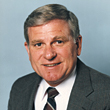IT Big in Lockheed's Joint Strike Fighter

Information technology companies may not build fuselages or jet engines, but they still might grab a healthy chunk of the $200 billion Joint Strike Fighter project.
Information technology companies may not build fuselages or jet engines, but they still might grab a healthy chunk of the $200 billion Joint Strike Fighter project.Lockheed Martin Corp., Bethesda, Md., won the contract Oct. 26 to build 3,000 of the stealthy, supersonic aircraft for the Air Force, Navy and Marine Corps, as well as the United Kingdom's Royal Air Force and Navy.Although the bulk of the work will be in physical design and development of the aircraft, IT will play a key role. The IT work and equipment for military aircraft usually runs between 3 percent and 10 percent of total cost. In the case of JSF, it could be worth more than $20 billion, according to Ray Bjorklund, vice president of consulting services with Federal Sources Inc., a market research and consulting company in McLean, Va. The Defense Department also is pushing contractors to be cost-conscious and to make warfare equipment network-centric, leading to an increasing role for IT in JSF."Certainly, there is an IT component to JSF, but people don't often think of it as IT," Bjorklund said. "You typically won't find the typical IT contractors as players in this field, as you tend to need aerospace credentials to play properly." The principal partners on the Lockheed Martin team are Northrop Grumman Corp., Los Angeles, and BAE Systems plc, Farnborough, England. Employees from all three companies are spread fairly evenly throughout all aspects of the project."The team is completely integrated. Members of each company are working on almost every system," said John Kent, spokesperson for Lockheed Martin. In addition, each of the principal partners is assembling its own team of subcontractors to undertake the component and subsystem work. Lockheed Martin has contracted TRW Radio Systems, an operating unit of TRW Inc., Cleveland, to provide the integrated navigation equipment, a contract estimated to be worth between $4 billion and $5 billion, not including sales to other countries. According to Joe Gerard, director of business development for TRW Radio Systems, TRW is working with 140 companies, mostly avionics suppliers, to deliver these avionics subsystems.Northrop Grumman is still hiring engineers for its team, said Jerry Lockenour, who is leading the integrated product team for the center fuselage part of the aircraft. Lockenour's team will have about 750 people."We use a lot of subcontractors for everything from software to machine parts and tools, and in today's environment we're trying to bring in the small business activities that have some highly skilled capability," he said. This year, Lockheed Martin will begin to produce 22 aircraft, work worth about $25 billion. These aircraft should be delivered in 2005, and fully operational units should roll off the assembly line by 2008. In addition to this order, the JSF design may generate future business from countries such as the Netherlands, Italy, Denmark, Norway, Canada and Turkey.Final assembly will take place at Lockheed Martin's Fort Worth, Texas, location, though major subassemblies will be produced at Northrop Grumman's El Segundo, Calif., facility and BAE Systems' facility at Samlesbury, England, as well.One major benefit IT will bring is in coordinating the remote teams as they develop the aircraft, Lockenour said. "It's a major element of us being able to do business between the various time zones and geographic locations," he said. One IT piece that helps in this regard is visualization tools, which allow developers to make changes more quickly. Silicon Graphics Inc. has sold about $50 million worth of equipment and services for JSF design work in the past five years, said John Burwell, senior director of government industry for SGI, Mountain View, Calif.Lockheed Martin has used SGI's advanced visualization technology for a number of tasks, particularly for component and system design. Lockheed Martin has claimed that by going to virtualization, the company has reaped up to 80 percent in time and cost savings. "The idea is if you build a very sophisticated simulator that simulates the vehicle dynamics ? how fast it goes, how far it goes, how much fuel it burns ? and you simulate the various weapons systems that will be on that aircraft, you could actually test the device long before you build a prototype," Burwell said.The concept is called digital prototyping, and goes well beyond the usual roles of computer-aided design software tools. "We're using solid models throughout, so we can go directly from the solid model definition to part fabrication," Burwell said. "We have a visualization assembly system that allows us to take solid model parts and assemble them into a total airplane, so today we have a full solid model definition of the airplane to see how parts will go together." Beyond digital prototyping, SGI equipment is also used as part of fully functional, simulated cockpits that allow testing of the ergonomics of an aircraft before it is built. This allows changes to be made earlier and at less cost in the design process. Another IT aspect to fighter planes is avionics. TRW has been working on an integrated software-based system that dramatically cuts back the room required for avionics gear on the plane, Gerard said."Instead of using 20 radios, one integrated avionics radio does all the tasks," he said. "The challenge over the last 20 years was to show it was possible to use common signal processor, common data processor and common displays in the cockpit, so you wouldn't have to carry all those extra radios around in the airplane, and you can make it easier for the pilot to fight the aggressor."While TRW has installed a number of these CNI subsystems on F-22s, the JSF implementation will be a larger scale project. It also represents a major shift to off-the-shelf equipment. "At the time we started the F-22 work, there was no commercially available technology to build those radios into the space allowed by the F-22," Gerard said. Unfortunately, as military budgets shrank in the early 1990s, a lot of military equipment vendors went out of business. So TRW looked towards products from the commercial marketplace. "As result of using off-the-shelf equipment, the cost goes down, as well as the size and power requirements," he said.The F-22 radio design is about three times as capable as the older radios and has 10 to 15 functions. The JSF radio will have 20 to 25 functions, he said.This complexity answers the Defense Department's call for tools to fight network-centric warfare.



Jerry Lockenour

Joe Gerard
NEXT STORY: GovNet Proposal Sparks Plenty of Ideas, Debate

